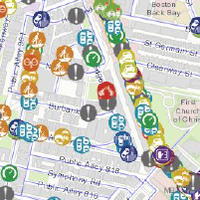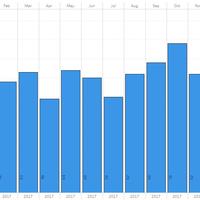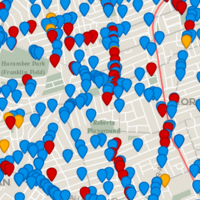Vision Zero
Vision Zero Boston is our commitment to focus the City’s resources on proven strategies to eliminate fatal and severe traffic crashes in the City by 2030.
We are inspired by the belief that even one fatality is too many.
What does Vision Zero mean for Boston?
Vision Zero Boston is a commitment to focus the City’s resources on proven strategies to eliminate fatal and serious traffic crashes in the city by 2030. We are inspired by the belief that even one fatality is too many.
While Boston has a relatively good record on traffic safety compared to many other cities, we are not content to accept 10+ fatalities, hundreds of pedestrian and cyclist injuries, and thousands of driver injuries on city streets every year. Death and serious injury should not be part of the cost of doing business in a busy city. That's why the City is committed to Vision Zero Boston.
Vision Zero Boston looks behind the statistics at:
- the human and economic cost of traffic crashes
- the barriers created by busy, high-speed roads in the heart of our City, and
- the impact of speeding on neighborhood streets that can limit access, mobility, and opportunity in communities that need it the most.
Vision Zero Boston makes traffic safety personal. In our work, we often meet victims of severe traffic crashes and the family and friends of people killed on our streets. Connecting with people who have been harmed reinforces that crashes are not just statistics, and traffic safety isn’t someone else’s problem.
Vision Zero Boston prioritizes safety and takes a people-first approach to transportation and community building. Most trips in the City of Boston are made by people on foot, bike, or transit. Everyone, including drivers, benefits from streets that are made safer for our most vulnerable road users.
Give input and view data
Input and data
Safety Concerns Map
Help make Boston's streets safer. Select a location, and tell us your transportation safety concern. We use your input to help decide how to make our streets safer when we redesign a street.

Crash report dashboards
View bar charts that aggregate crashes by type and month of occurrence.
High Crash Locations and Corridors
High Crash MapsThe data is based on EMS responses and fatality data from Boston Police.
City-owned streets that had the highest number of pedestrian crashes.
City-owned streets that had the highest number of cyclist crashes.
City-owned streets that had the highest number of motorist crashes.
City-owned streets that had the highest number of crashes for all modes.
View a draft interactive map of 2019-2021 high crash corridors and intersections.
The data is based on EMS responses.
Our work
Current projects
See projects in your neighborhood that will advance safety for everyone using the street.
Better Bike Lanes
We're working on bike lanes that are safer for everyone on our streets.
Safety Surge
We're making streets safer throughout the City by adding speed humps, improving traffic signal timing, building safer intersections
Neighborhood Slow Streets
We use an equity lens to invest in traffic-calming on residential streets.
Safety Toolkit
Learn about our design tools that create safer crossings, safer turns, and safer speeds.
25 in Boston
In 2017, Boston lowered the default speed limit to 25 mph. Learn more about why we made the change.
Boston's Safest Driver
In 2016 and 2019 Boston hosted a safest driver competition using a smartphone app called Boston's Safest Driver. The app provided helpful feedback on driving based upon five metrics.
Large Vehicle Safety
Understanding the risks posed by trucks and large vehicles, and what the city, fleet managers, drivers, and road users can do to reduce those risks, will help make our streets safer and will ultimately save lives.
Reports and Updates
Reports and UpdatesA before-and-after analysis of crash data on streets with bike infrastructure added between 2018-2020.
Our updated Vision Zero Action Plan reflects progress made since we published our first Vision Zero Action Plan in 2016.
Published in 2018, this report provides a review of the progress that we made in 2017 and the first half of 2018.
Published in 2017, this report provides a review of the progress that we made in the 2016 calendar year.
Our Vision Zero Action plan outlines our goals and how we plan to reach them.


